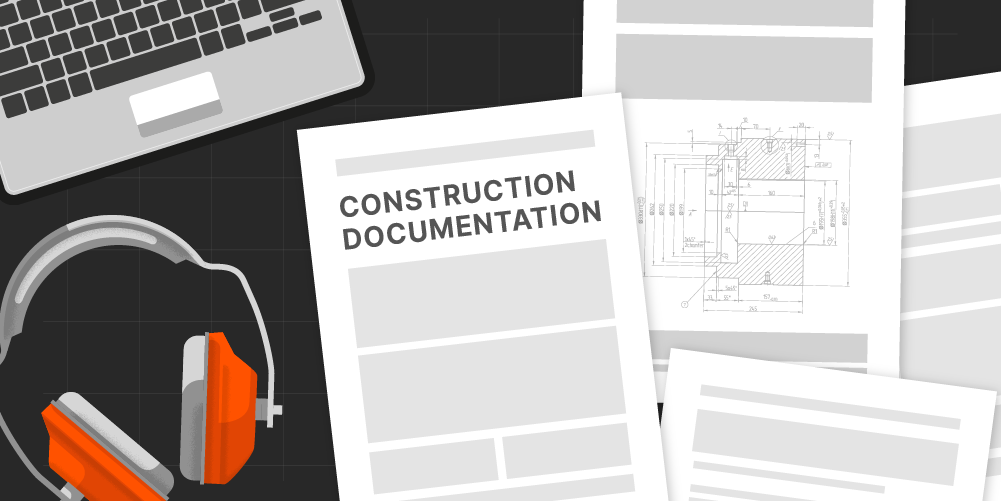— 6 min read
Construction Progress Claims: Keeping Cash Flowing
Last Updated Apr 23, 2025
Last Updated Apr 23, 2025

In construction, steady cash flow is critical—and progress claims help make that possible. These claims enable staged payments based on work completed, rather than waiting until project completion.
In this article, we’ll break down what progress claims are, how they differ from invoices, and what they should include. It also touches on how Australian laws, like the Security of Payment Act (SOPA), protect your right to prompt payment, along with best practices to reduce disputes and keep payments moving on schedule.
Table of contents
What is a Progress Claim?
A progress claim is a formal request for payment submitted by a subcontractor or supplier after completing work or delivering materials during a specific billing period.
Unlike purchase orders (submitted before work begins), progress claims facilitate staged payments throughout long-term projects, creating a sustainable financial workflow.
Progress claims help maintain project financial stability by:
- Supporting subcontractor cash flow by aligning payments with completed work and contractual milestones
- Accelerate payment cycles through structured workflows that minimise admin delays and streamline approval workflows
- Improve financial visibility for head contractors and stakeholders with clear documentation, audit trails, and forecasting inputs
- Reduce payment disputes by creating a transparent link between on-site progress and billing expectations
The Final Progress Claim
The final progress claim is the contractor’s last entitlement to payment under the contract, typically including the remaining contract balance and any retention funds still held.
The claim is submitted once the project reaches Practical Completion or Substantial Completion, when major works are finished and the project is ready for handover.
Project owners often withhold this payment until all outstanding defects are resolved. Before approval, contractors may need to provide:
- Proof that subcontractors and suppliers have been paid
- Close-out documentation such as as-built drawings, O&M manuals, and warranties
- Verification from a quantity surveyor confirming the work claimed is complete
- Final quantities and confirmation of completed deliverables
- Access for a final building inspection or walkthrough
Once approved and paid, the contractor’s financial obligations under the contract are considered complete.
The Difference Between Progress Claims and Invoices
Progress claims and invoices are both used to request payment, but they serve distinct roles in construction financial management.
Progress claims are tied to work completed or materials delivered during the project. They follow a structured review process and are typically used on long-term contracts with staged payments.
Invoices, by contrast, are standard billing documents issued after a service is delivered or a milestone is reached—more common for discrete tasks or material purchases.
| Progress Claim | Invoice | |
| Purpose | Request for staged payment based on progress | Bill for goods or services, typically post-delivery |
| Timing | During the project, often tied to milestones or billing periods | After task completion ordelivery |
| Detail Level | Linked to Schedule of Values or Bill of Quantities | Itemised or lump sum |
| Approval Flow | Requires formal review and validation before payment | Often follows an already-approved task |
| Use Case | Common for long-term contracts with progress-based payments | Used for one-off tasks, material purchases, or final billing |
What to Include in a Progress Claim
A complete and accurate progress claim reduces approval delays, ensures alignment with contract requirements, and supports faster payment. Here’s what to include:
1. Contract and Claim Context
To create traceability and ensure proper review context, include:
- Contract or subcontract reference and number
- Claim number and submission date
- Billing period: start date, end date, and payment due date
- Contact details for the submitter and approver
2. Financial Breakdown: Schedule of Values or Work Breakdown Structure
Provide a line-by-line breakdown of the contracted scope, including for each line item:
- Original contract value
- Work completed to date (as percentage and dollar value)
- Amount previously claimed
- Current amount being claimed
- Remaining value to complete
- Retention withheld or released
- Approved variations with references
3. Stored Materials or Unit-Rate Work
For contracts involving stored materials or unit rates, include:
- Claimed stored materials (location and ownership)
- Quantities claimed vs approved
- Supporting evidence (e.g. dockets, receipts, storage documentation)
4. Supporting Documentation
Include relevant documentation that verifies claimed progress to speed up review and reduce dispute risk
- Photographic evidence of completed works
- Daily site reports, inspection logs, or test results
- Completion certificates or sign-offs
- Variation approval forms
- Updated program of works or progress schedule
5. Compliance and Payment Details
Ensure all financial components are itemised and compliant with contractual and tax requirements:
- GST and tax breakdowns
- Itemised retention, deductions, or adjustments
- Bank details
- Certificates, licenses, or insurance documents (e.g., insurance or trade credentials) if specified in the contract
6. Authorisation and Submission Format
Follow the agreed process for submitting claims to avoid unnecessary back-and-forth.
- Digital or physical signature (as required)
- Required format: PDF, spreadsheet, or platform upload
- Summary or cover sheet if specified
Understanding Australia’s Progress Claims Laws
The Security of Payment Acts (SOPA) ensure contractors and subcontractors are paid fairly and on time. These laws grant the legal right to submit progress claims and set clear rules for how those claims must be handled. While each Australian state and territory has its own version, key protections are consistent nationwide.
Key Protections Under SOPA
Contractors and subcontractors benefit from several legal safeguards:
- Right to progress payments: Entitlement exists even if the contract doesn’t specify it.
- Prohibition of "pay when paid" clauses: Such clauses are unenforceable under SOPA.
- Mandatory payment schedules:Respondents must reply (typically within 10 business days), or the full claim becomes payable.
- Fast-tracked adjudication process:Unpaid or disputed claims can go to adjudication, usually resolved in 10–15 business days.
- Enforceable decisions: Adjudicator rulings can be enforced in court; in some states, unpaid parties may suspend work.
- Retention trusts and project trusts: In some states, retention money must be held in trust accounts to protect subcontractors from insolvency risks.
Progress Claim Best Practices
1. Align with Contract & SOPA Requirements
- Review submission requirements, billing intervals, formatting standards, and applicable notice periods
- Confirm how retention is managed and when trust arrangements apply
- Track obligations under SOPA, including response timeframes and documentation protocols.
Pro Tip
Integrate SOV updates across teams by managing them in a shared, centralised project management system
2. Maintain an accurate Schedule of Values
- Keep line items aligned with current progress, contract scope, and previously approved claims
- Reconcile each claim against prior submissions to ensure continuity
- Validate that claimed amounts reflect measurable, completed work
3. Provide supporting documentation for each claimed amount
- Attach photographs, site reports, inspection logs, and formal sign-offs tied to specific claim items
- Include dockets, receipts, or proof of storage for material-based claims
- Connect all documentation to claim line items for a clean audit trail
- Store and manage files within a construction management platform to provide instant access during review and reduce manual handoffs
4. Standardise claims using construction software
- Generate claims using contract-linked templates with pre-set rules and structures
- Track submission dates, status, and required actions from a central dashboard
- Align claims with actual progress by linking billing data to schedules and site activity
- Automate approvals to reduce delays, improve traceability, and simplify recordkeeping
5. Document everything in anticipation of disputes
- Maintain time-stamped records of submissions, reviewer comments, and supporting materials
- Organise documentation so it’s accessible during adjudication or escalation
- Understand your dispute resolution options under SOPA, including when and how to initiate adjudication
- Use connected systems to log all claim interactions, document revisions, and formal responses, building a complete history for enforcement if needed
Progress claims support financial stability and project success.
Progress claims create structured payment workflows that align compensation with completed work. Standardised processes and digital tools reduce payment delays, minimise disputes, and maintain healthy cash flow throughout construction projects.
Categories:
Tags:
Written by
Josh Krissansen
Josh Krissansen is a freelance writer with two years of experience contributing to Procore's educational library. He specialises in transforming complex construction concepts into clear, actionable insights for professionals in the industry.
View profileExplore more helpful resources

Document Control, Mastered: Blueprints, Binders & the Cloud
In construction, poor document control is more than a hassle—it’s a liability. Mismanaged documents can delay builds, drive up costs, and cause security and compliance issues. It’s a challenge facing...

Construction Analytics: The Key to Smarter Decision-Making
Data is everywhere in construction—embedded in schedules, site activity logs, safety reports, and cost tracking tools. Yet despite the abundance of available information, many construction decisions still hinge on gut...

Construction Document Management: The Challenges and Benefits of Embracing a DMS
Every construction project begins, continues, and ends with a mountain of paperwork. From initial bidding documents to contractor agreements, blueprints, variation orders, inspection reports, on and on it goes. And...

Cash Flow Forecasting in Construction: How to Stay Ahead of Funding Gaps and Protect Project Performance
Cash shortfalls are a leading cause of stalled projects, unpaid contractors, and budget blowouts in construction. Without a clear forecast of how cash will flow in and out over time,...